|
A wonder box is a heat retention cooker. After you bring your food to a boil, (so it is heated throughout) using any number of cooking methods, you remove it from the heat source and quickly place the pot inside the wonder box. The insulation of the wonder box will slow your food’s loss of heat keeping at cooking temperatures for hours. |
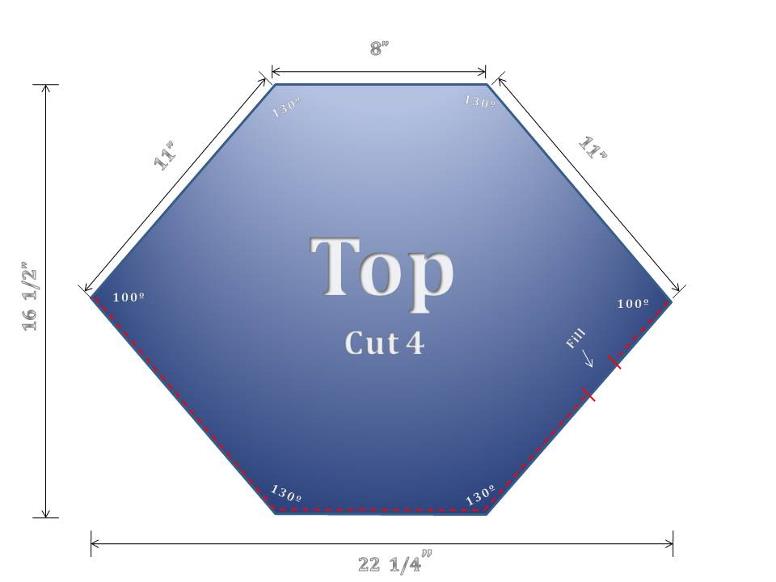








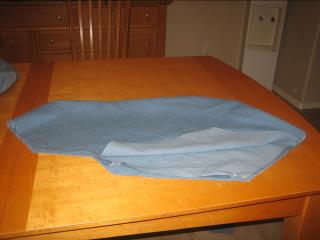
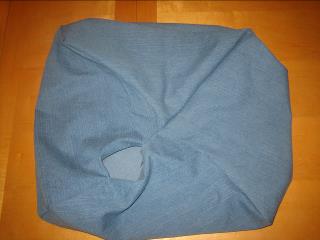
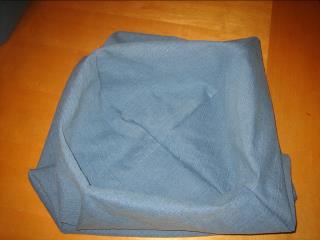
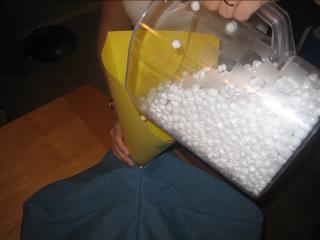
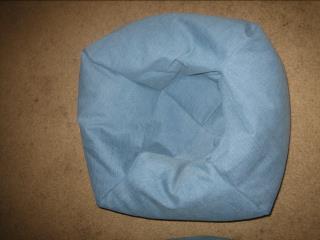
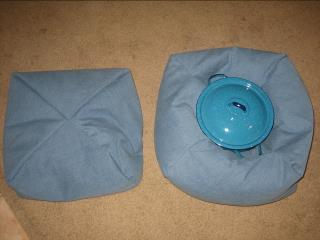
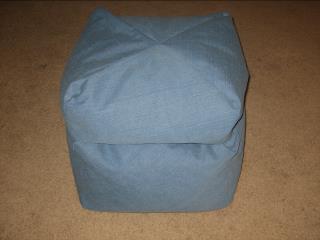
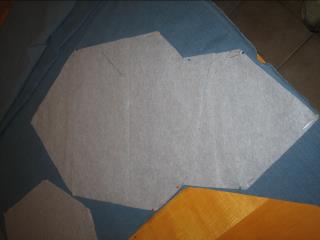
|
Repeat steps 2-4 but for the bottom pieces.
Fill the top “pillow” with 7 gallons of filling. Polystyrene beads are prone to static. Use a paper funnel and a gallon pitcher to make this job easier. Sew closed the opening left to insert the filling.
Fill the bottom “pillow” with 12 gallons of filling. Sew closed the opening left to insert the filling. The narrow tongue of the bottom “pillow” tucks into the larger end to form a depression like a bowl or nest. The pot sits snuggly in this depression. The lid should fit comfortably on top sealing all gaps.
The pot you select, should have a lid that seals well. The pot should also have short handles on both sides as opposed to 1 long handle. The pot could be a 4, 5 or 6 quart pot. If the pot is too small, add a blanket around it before you set it inside the Wonder Box. Notes: The major benefit of the Wonder Box is to reduce the fuel you need to cook your meals. By simply bringing your food to boiling temperature for 3 minutes (15 minutes for beans) and then turning off the heat and quickly placing the pot in the Wonder Box. [The important point is to make sure that the food is at boiling temperature throughout, so large pieces of meat may need to be cubed or make sure you give it time to heat thoroughly]. The heat already in your food, combined with the insulation of the Wonder Box, will allow your meal to keep cooking “at safe cooking temperatures” for hours. Remember, the less space there is around the pot, the less heat will be lost One source stated that you can save up to 80% of your needed fuel by using a Wonder Box because the heat used for simmering is eliminated. What kind of meals can you cook in a Wonder Box? Most meals that you would cook in a Crock Pot. Meals that simmer in liquid. Rice, Chili, Stews, Soups, etc… Your food should be entirely covered with liquid, so if you are cooking a whole chicken or a roast, make sure the food is completely covered. With a little creativity, even other foods can be cooked in the Wonder Box. For example, a few whole potatoes in an oven cooking bag placed in a pot of water brought to a boil, will cook without being water logged. The Wonder Box is a slow cooker, Rice will take about an hour, a whole chicken in 3-4 hours. Tip: cook your breakfast and lunch at the same time using the same coals. By Lunch time, your meal will be ready. You can’t burn food in a Wonder Box. As long as your food stays over 160º F, Your food can cook all day. One source recommended not using your Wonder Box while it is sitting on metal as it may some of the heat through the bottom. The Wonder Box can be washed using hot water and soap and dried on a clothes line. |
|
Cooking times from: http://solarcooking.wikia.com/wiki/Heat-retention_cooking |


|
Using a wonder box reduces the amount of fuel needed to cook your meal because the fuel that would normally be used to keep your food at cooking temperatures after it has started boiling is eliminated. Materials: Soft Cotton or Broadcloth Material.
(Soft material will conform to the pot reducing air pockets or channels for |
|
the air to escape. Cotton works best as it will not melt when touching the hot surface of the pot.) I used a thin denim but will probably use a softer material next time. The fabric was 52” wide. I used 2¼ yards. Narrower fabric may require up to 3 ¼ yards.
19 Gallons (About 3 Cubic Feet) of Polystyrene Beads
(Bean Bag Filler, EPS Beads (Regrind), Shredded foam shipping popcorn)…..Wonder Boxes have been also made with the following filler material (Wool, Feathers, Leaves, Shredded Newspaper, Saw Dust, Ground Corn Husks, Etc…) Instructions: There are 2 shapes that will need to be made out of the material. The patterns are included below. One shape is needed to make the top of the Wonder Box, the second for constructing the bottom. You will need to cut 4 of each of these shapes. Once you have cut out the 8 shapes (4 for the top and 4 for the bottom), you can start the sewing process. Take 2 top pieces and lay them front-to-front, so the exterior of the fabric of each piece is touching each other. Sew the 2 pieces together along the dotted sew-line as displayed on the patterns below. Go ahead and double-stitch it if you wish it to be more durable. Leave a small opening along one of the seams so you can add the filler. Repeat “Step 2” (Except for the opening) on the other 2 pieces of the top material.
Now you will have 2 pieces (each with 2 pieces of the top sewn on one side). Place these two pairs with the exterior of the fabric facing each other. Sew these 2 pairs together so all seams are sewn together. Pull the material through the opening you left open to insert the filler material so the exterior side of the material is on the outside. You will end up with an awkward shaped floppy pillow. |

|
Wonder Box |



|
Retained Heat Cooking Times — Approximate |
||
|
Food |
Simmering Time |
Wonder Box Time |
|
White Rice |
5 Minutes |
1-2 Hours |
|
Brown rice |
10-15 Minutes |
2 Hours |
|
Potatoes, Whole White |
5-10 Minutes |
1-2 Hours |
|
Creamed Soups |
2 Minutes |
1 Hour |
|
Dried Beans, etc,. Soaked |
10-15 Minutes |
3-4 Hours |
|
Meat Roast |
20-30 Minutes |
3-5 Hours |